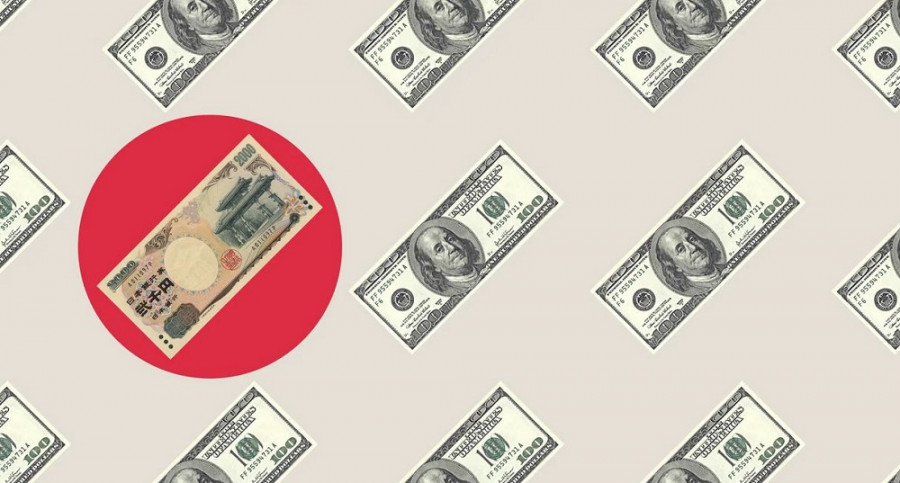The USD/JPY pair dropped more than 200 points within a few hours. Judging by the strength of the downward movement, the "bearish feast" is far from its completion. At the moment, the pair has already updated a 3-month price low, returning to the 144 figure area for the first time since September of this year. The yen is the locomotive of the downward movement in USD/JPY, although the greenback also contributes—the U.S. Dollar Index has turned downward again after three consecutive days of growth. The pair is descending almost without a pullback. The spring that has been compressed for years is finally starting to unwind: Bank of Japan Governor Kazuo Ueda spoke about moving away from ultra-loose monetary policy.
Note that Ueda's reasoning was hypothetical and, in a sense, philosophical, without any specifics or (even more so) timeframes. Moreover, the latest data on CPI growth in Japan pushed back the prospects of calibrating QQE by the Japanese regulator: inflation has started to pick up again. At the same time, Ueda repeatedly (including today) emphasized the need to maintain ultra-low interest rates until they reach the two percent inflation target "on a stable and sustained basis, accompanied by wage growth."

But let's return to today's resonant statement by Kazuo Ueda, which was voiced in the Japanese parliament following his meeting with the country's Prime Minister Fumio Kishida. Ueda announced that the Central Bank is considering various options for target interest rates after removing the cost of short-term loans from negative territory. According to him, the regulator can either maintain the interest rate applied to reserves or return to a policy oriented towards the overnight rate. Ueda noted that the central bank has not yet decided on which interest rate to choose as the target when the bank finishes its negative interest rate policy. However, he did not specify when exactly the regulator plans to change its course.
The phrases voiced by the head of the central bank are not an "advance" or an "announcement." These are just thoughts out loud, a kind of "statement of intent." Ueda did not mention any timeframes.
The turbulent reaction of USD/JPY traders is explained by the fact that the Bank of Japan, for the first time since 2016 (when interest rate was lowered into negative territory), seriously spoke about moving away from ultra-loose policy. These considerations were voiced for the first time within the walls of parliament and (which is important) after a meeting with the country's prime minister. This indicates that the Japanese regulator is indeed preparing the ground for significant changes, which are likely to take place next year and, apparently, in the first half of the year.
Inflation will likely play a key role in the "pace" of decision-making. Recall that the Consumer Price Index (CPI) published at the end of November reflected an upward trend: after a two-month downward trend, the indicator rose again to 3.3% (the strongest growth rate since July of this year). The core CPI, excluding fresh food (a key indicator tracked by the Bank of Japan), rose to 2.9% YoY in October after a 2.8% increase in September. This inflation indicator has been above the Bank of Japan's two percent target for 19 consecutive months.
However, if inflation begins to slow down again next year, as indicated by many forecasts (including the central bank's), the question of normalizing the Quantitative and Qualitative Monetary Easing (QQE) will come to the fore. The fact that the head of the Bank of Japan has started discussing options for a potential exit from negative interest rate policies today is a significant development. It marks a kind of turning point, even though Ueda spoke about the prospects of policy tightening in a hypothetical manner.
Now, USD/JPY traders will actively factor in the possibility that the Bank of Japan may abandon the negative interest rate regime sooner than expected. At the same time, market confidence is growing that the U.S. Federal Reserve will cut interest rates in the first half of next year. For example, according to the CME FedWatch Tool, the probability of a 25-basis point rate cut at the May meeting is estimated at 42%, and the probability of a 50-basis point cut is 39%. Undoubtedly, it is still too early to talk about a "reverse correlation" between the courses of the Federal Reserve and the Bank of Japan, but even such emerging prospects will exert strong pressure on USD/JPY.
Thus, the current fundamental background contributes to further price decline. At the moment, the pair is testing the support level at 144.50 (the Kijun-sen line on the weekly chart). If sellers break this target, they will open the way to the next price barriers: 143.00 and 142.10 (the lower Bollinger Bands line on the same timeframe).










